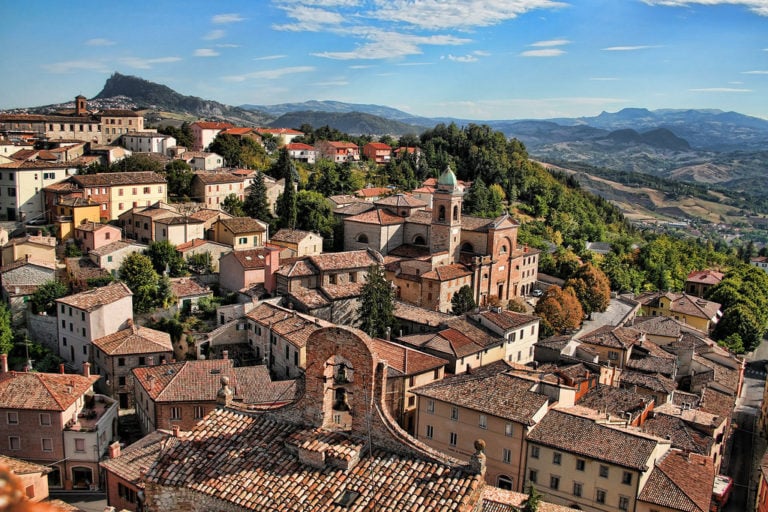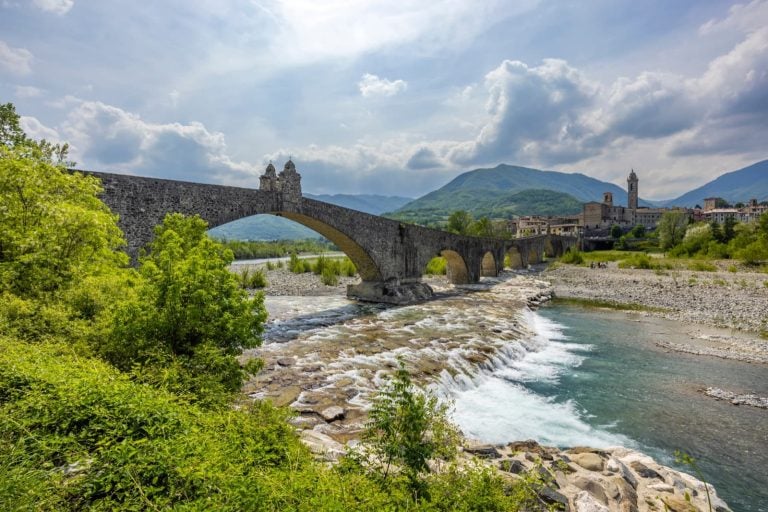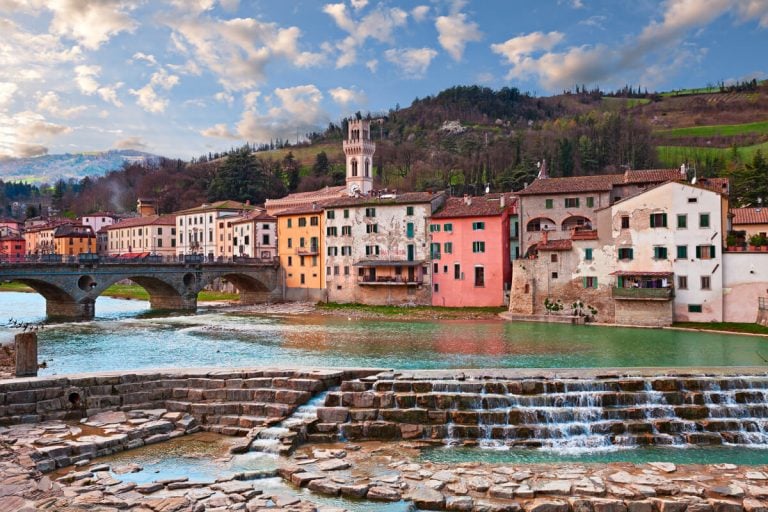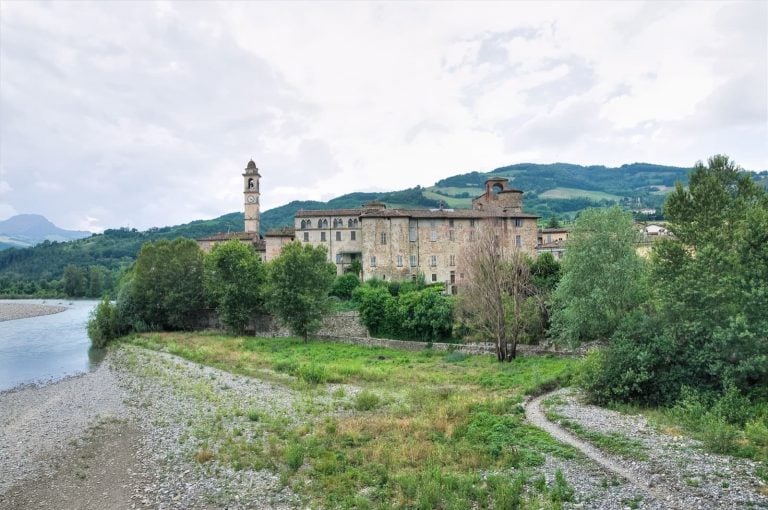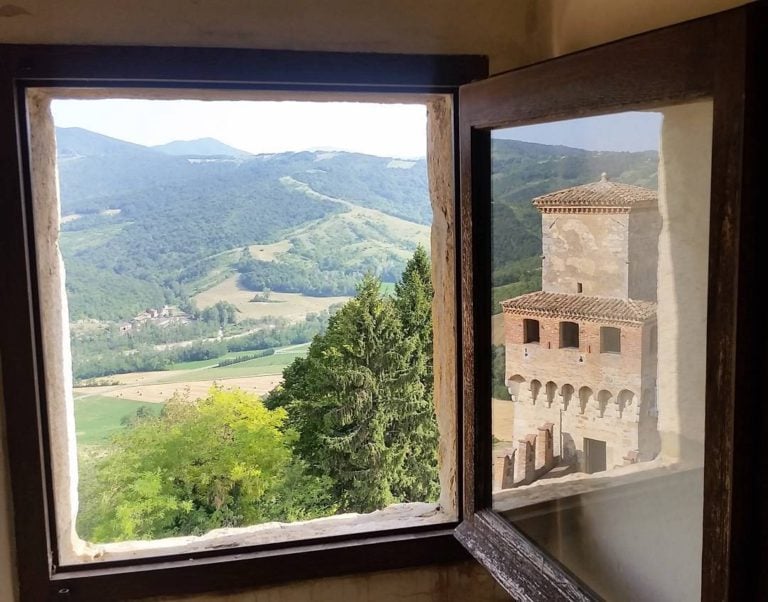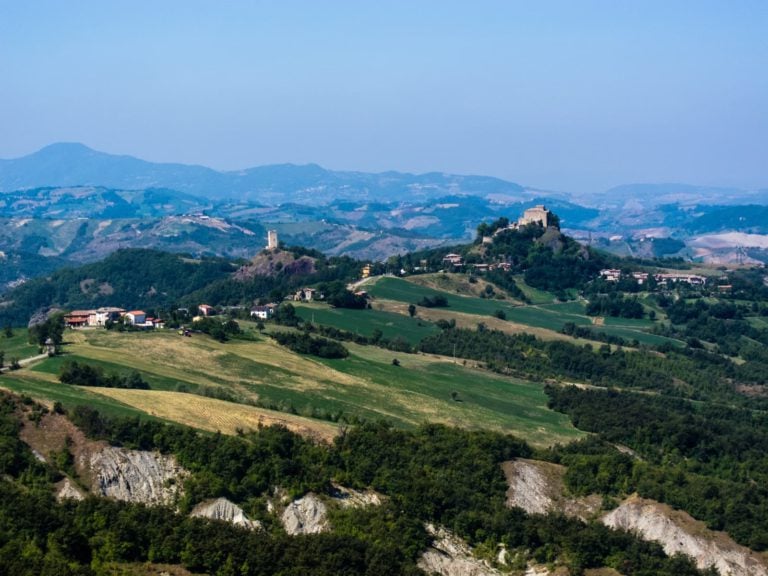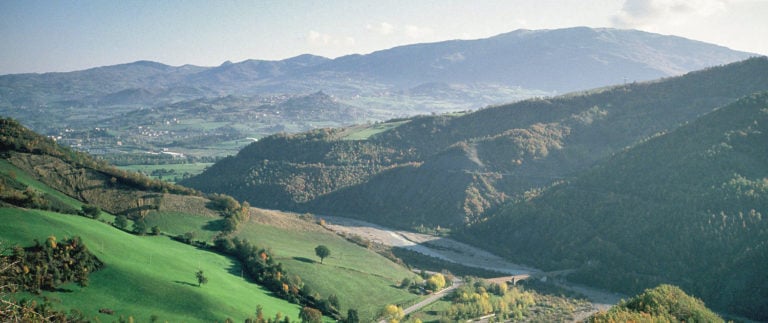Moving with public transport can have many advantages in terms of comfort, environmental impact, and costs.
It is assumed, however, that some places, such as the small ancient villages, are unreachable with public transport.
Emilia-Romagna is a region full of villages that have something to tell so, for the lovers of historical tours who don’t want to take a car, we have selected 5 villages reachable by train, all along with the Via Emilia.
Berceto
A privileged position on the Apennines makes Berceto, in the province of Parma, the last stop on the Via Francigena.
It has always been an important marketplace, founded, it seems, by the Lombards in the eighth century, around a medieval monastery. The architecture fully reflects this spirit, from the Duomo, located at the center of the village, to the source of Piazza San Giovanni. The fractions of Berceto, in particular, Corchia and Pietra Morgolana, still present traces of this past.
Berceto is a place not only to admire but also to taste and walk. In addition to the famous path of the Via Francigena, you can stroll on the Devil’s paths, the small and twisted roads that wind through Berceto’s area.
In addition to the dishes of the Emilian cuisine in Berceto, you can taste typical products such as potatoes and porcini mushrooms (the latter is dedicated to a whole journey). The typical sweets are very particular: spongata and pattona.
The Ghiare di Berceto station (about 10 km from Berceto) is served by the Parma-La Spezia line.
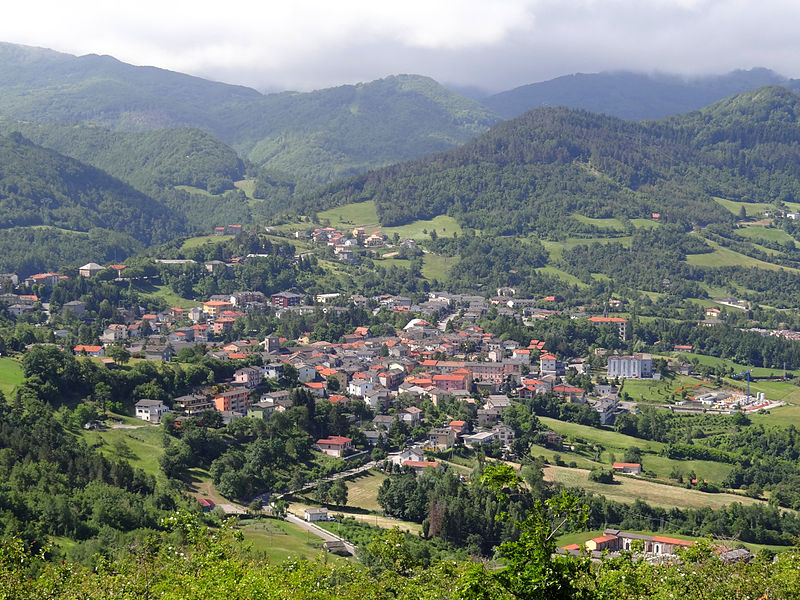
Busseto
Busseto, in the province of Parma, is one of the many villages situated on the banks of the Po, in the lower Parma area.
Former capital Pallavicina, Busseto is famous above all for the small fraction of Roncole, which was the birthplace of Giuseppe Verdi. Routes and events have been dedicated to this music Maestro.
His traces remain in the places of Busseto, from the theater to the house where he lived with his wife, up to the Giuseppe Verdi National Museum, hosted by the suggestive Villa Pallavicino. Other architectural places of interest are La Collegiata di San Bartolomeo, the Church of Santa Maria degli Angeli and Villa Pallavicino itself. The stables of the latter now host the Renata Tebaldi Museum.
Busseto is part of the suggestive Culatello Route, which includes some of the small capitals of the Po in a wonderful route to be enjoyed.
Busseto’s station is served by the Cremona-Fidenza line and is connected to the capital, Parma, right from the junction with Fidenza.
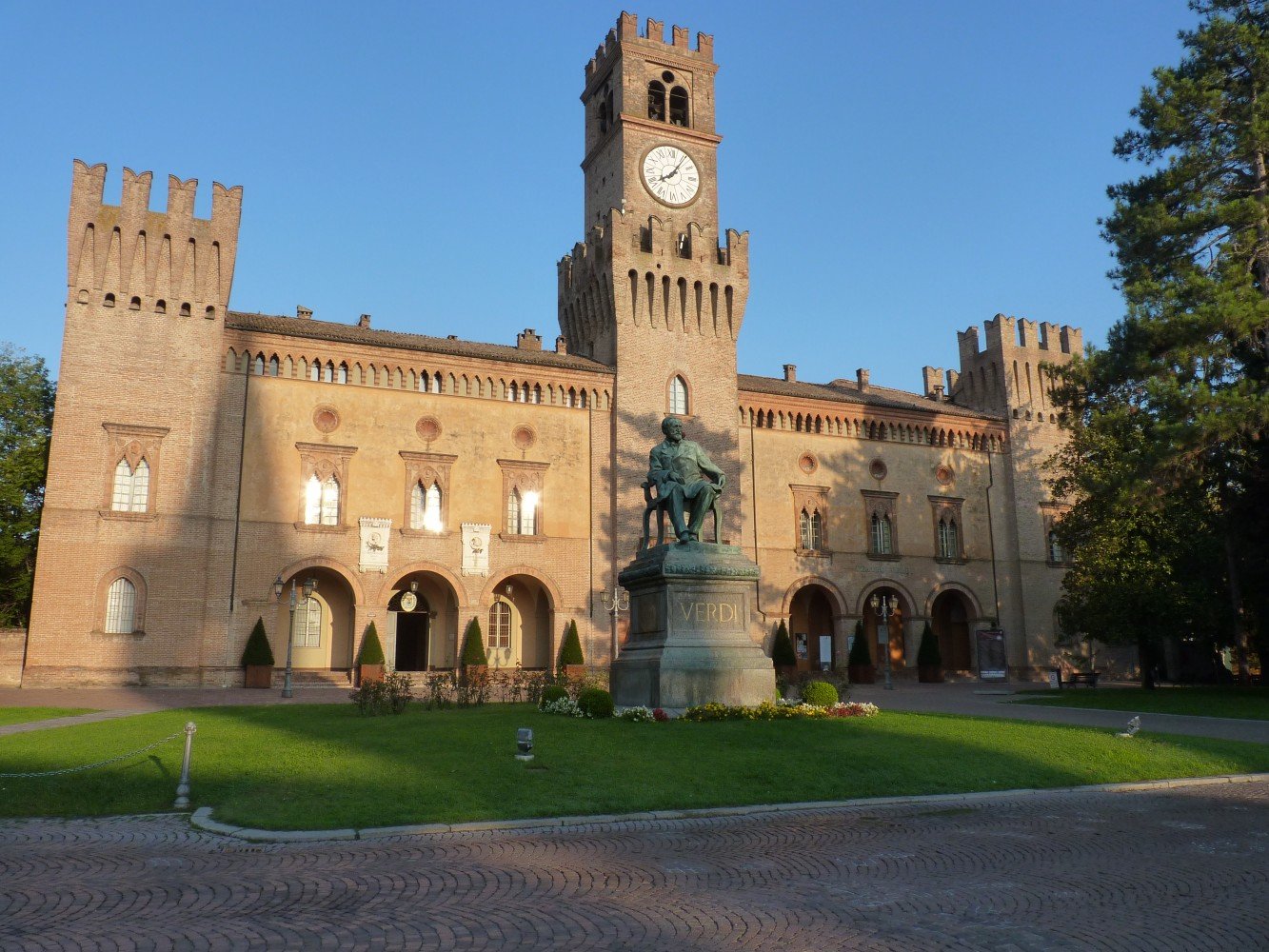
Gualtieri
Gualtieri, in the province of Reggio Emilia, is located close to the right bank of the Po river and the left bank of the Crostolo stream. Like many countries in this area, it was born from the utilization of wetlands, so much so that it is still present the floodplain, in which the floodwaters are damped. It was founded around the ninth century and then remained for a long time under the domination of the Marquis Bentivoglio.
Inside Gualtieri, you can visit Palazzo Bentivoglio, which contains the Antonio Ligabue Documentary Museum and the Umberto Tirelli Donation, prominent figures of Gualtieri. Ligabue lived isolated in these places, in the woods, and in the floodplains of the Po. Umberto Tirelli was a great theatrical tailor, and he donated his drawings to Gualtieri. The Teatro Sociale di Gualtieri can also be visited. The sacred architecture, however, is reflected in the Church of Santa Maria della Neve and in the Church of Sant’Andrea, the original nucleus of the village.
The water landscapes are all to be admired for a walk in nature, on foot or by bike.
The Gualtieri Station is served, as Busseto, by the Cremona-Fidenza and by the Parma-Suzzara lines.
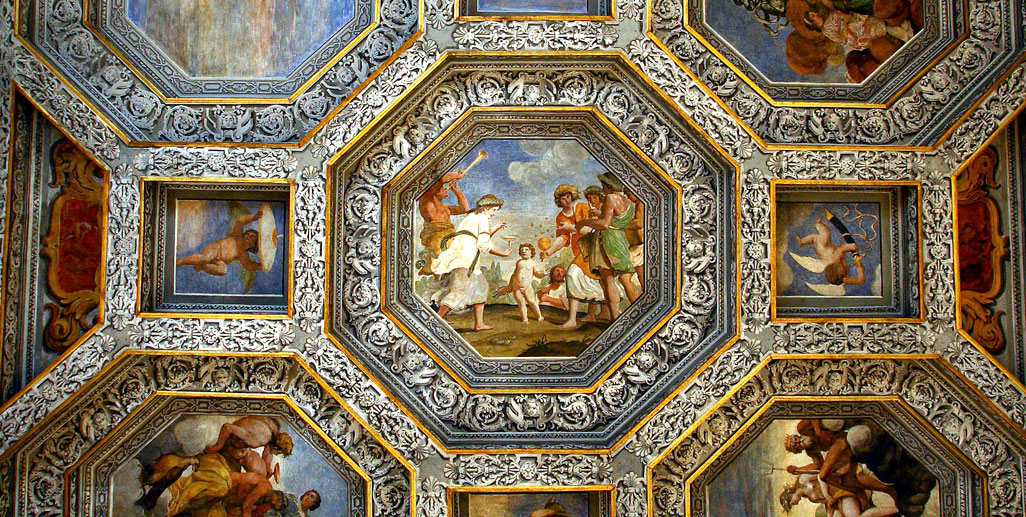
Brisighella
Brisighella is located in the Regional Park of Vena del Gesso, in the heart of the Apennines between Florence and Ravenna.
Listed among the most beautiful villages in Italy, it enjoys a particularly nice position in the heart of the green Lamone valley. The village stands under 3 hills on which stand the Rocca Veneziana, the Clock Tower, and the Sanctuary of the Madonna del Monticino.
Brisighella is also known for its gastronomic delicacies. For some of them, during an intense month of November, ad hoc events are dedicated that make up a tasty review entitled “4 sagre x 3 colli”.
During the festivals, on Saturday evening and Sunday for lunch, the food stand and the restaurants of the village offer themed menus with the product to which the festival is dedicated. In addition, on all four Sundays, the streets of the historic center are crossed by a tourist train to admire the splendid views.
Brisighella’s station is served by the Santa Maria Novella Faenza-Florence line, with junctions also towards Rimini and Ravenna.
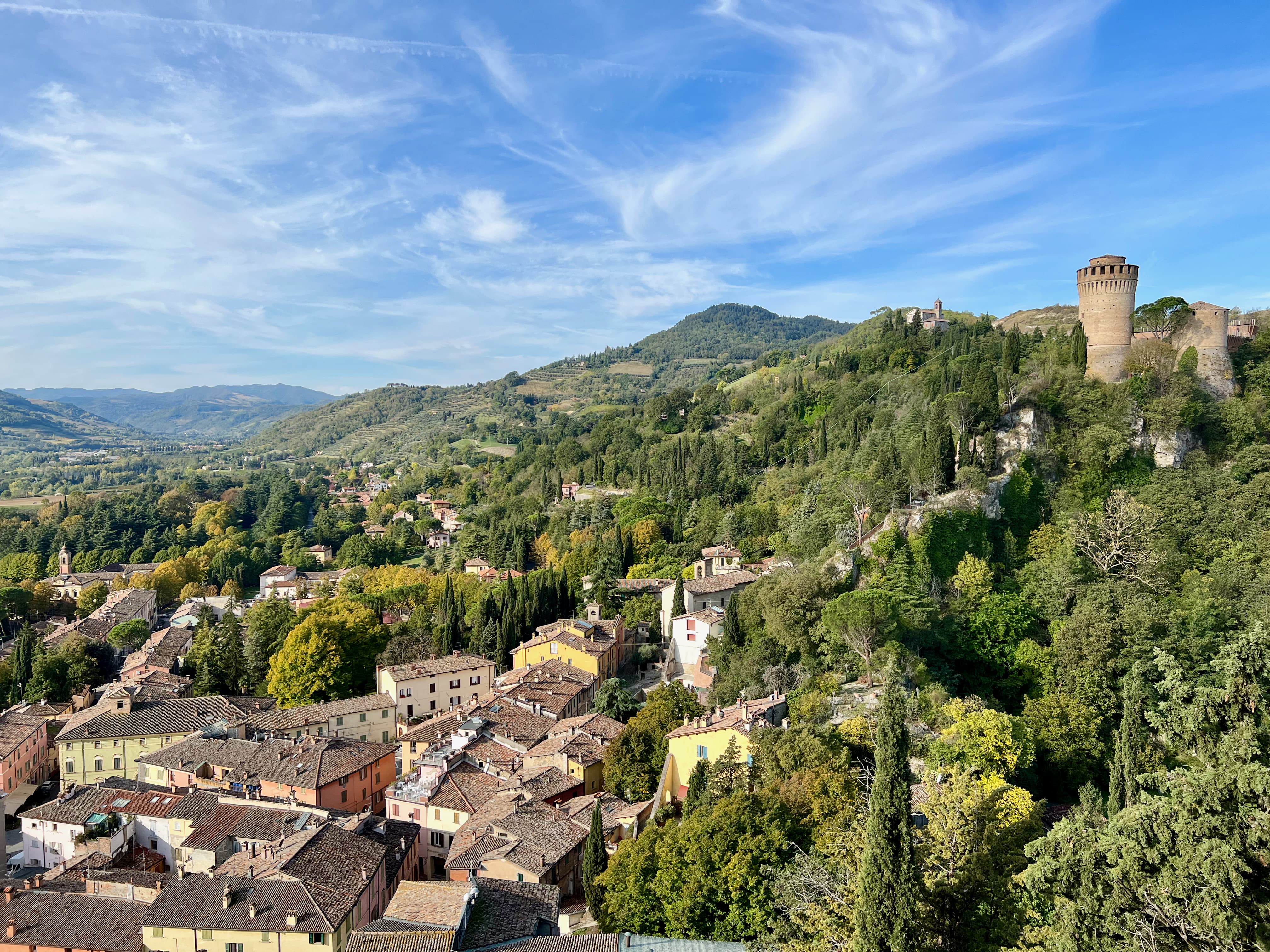
Bertinoro
Bertinoro is located a few km from Forlì, in a hilly environment, surrounded by hectares of vineyards of Sangiovese and Albana, typical local wines.
It has ancient origins, probably dating back to prehistory, but developed in the early Middle Ages, under the domination of Ravenna before and under the Papal State then. The medieval heart of this village is manifested in Palazzo Ordelaffi, an ancient municipal palace. It contains two important rooms: People’s Room, and Fame Room. The Clock Tower, in the square, once served as a lighthouse. The Cathedral of Saint Catherine of Alexandria stands out, instead, for its Baroque architecture. The real beauty of Bertinoro, however, is the fortress, which hosted Dante and which today is home to the University Residential Center of High Formation, and the Interreligious Museum. Even the streets have something to tell, we suggest you visit the Grape Harvest road and that of the Disappearing Crafts.
Bertinoro is known as the balcony of Romagna because of the incredible view it offers on those that are the Lands of Piero della Francesca.
Among the typical products of Bertinoro stand out, of course, piadina, squacquerone, and the very special Savor, a grape syrup. Many manifestations of this village: Feast of Hospitality, Dante Days, Albana Dèi, and the very interesting Entroterre Festival.
The Forlimpopoli station (Forlimpopoli-Bertinoro) is served by the Bologna-Ancona line. From the station you have to then take a bus that in about 20 minutes of scenic road reaches the hilltop village.
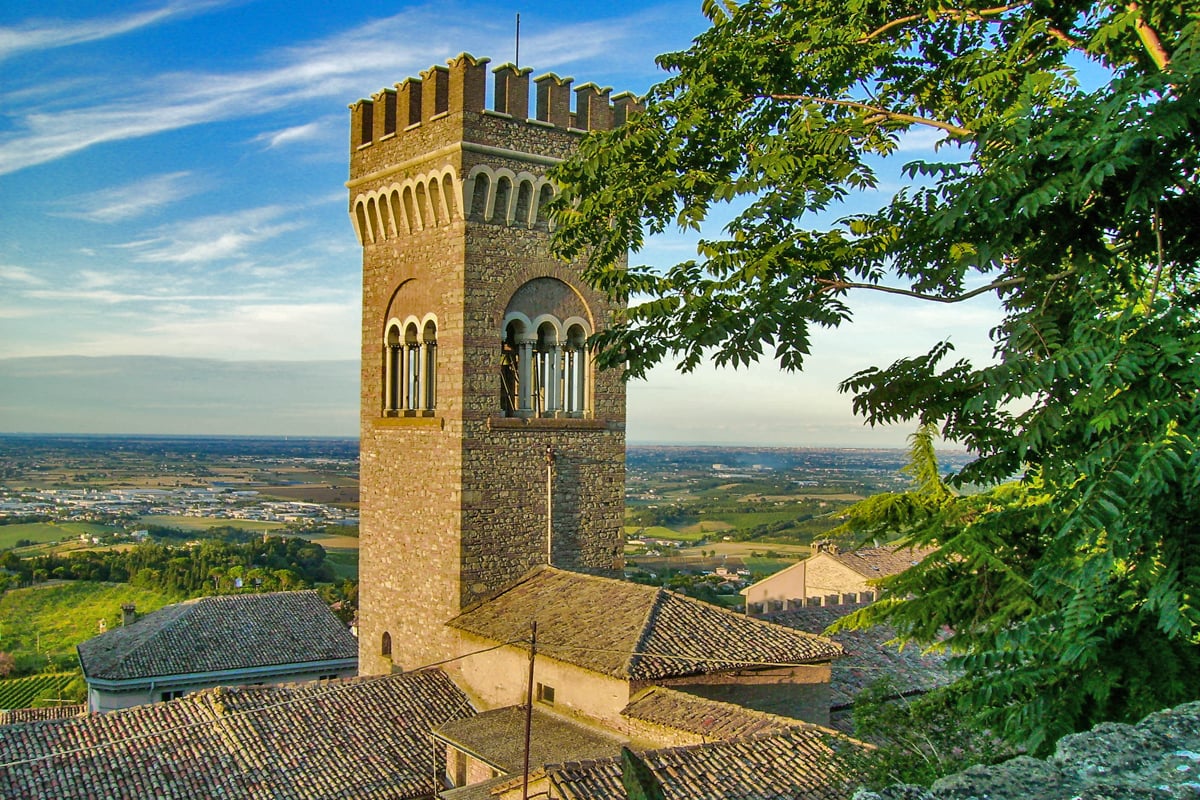
Author
You may also like
The most beautiful Italian Villages in Emilia-Romagna
by Elisa Mazzini /// November 26, 2024
The “Orange Flag” Villages in Emilia-Romagna
by Elisa Mazzini /// December 10, 2024

Interested in our newsletter?
Every first of the month, an email (in Italian) with selected contents and upcoming events.
Hidden paradises of Emilia Romagna 20 minutes away from Via Emilia Route
by Walter Manni /// November 13, 2024
5 Castles not to be missed in the Lands of Matilde di Canossa
by Elisa Mazzini /// February 13, 2020
